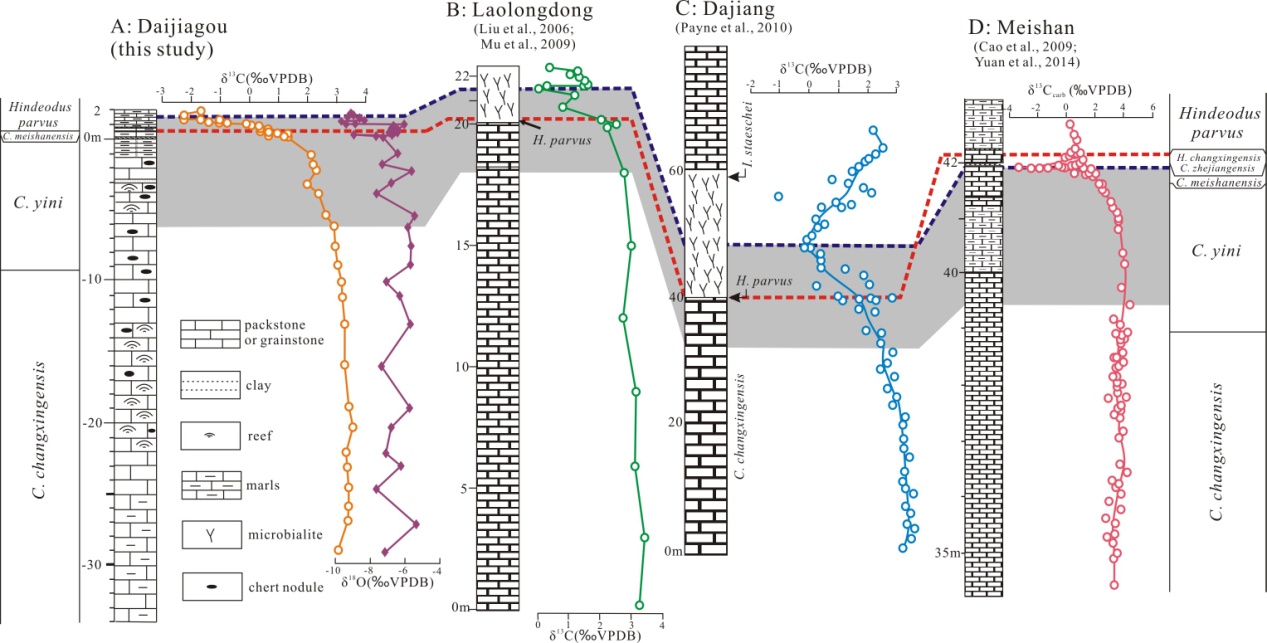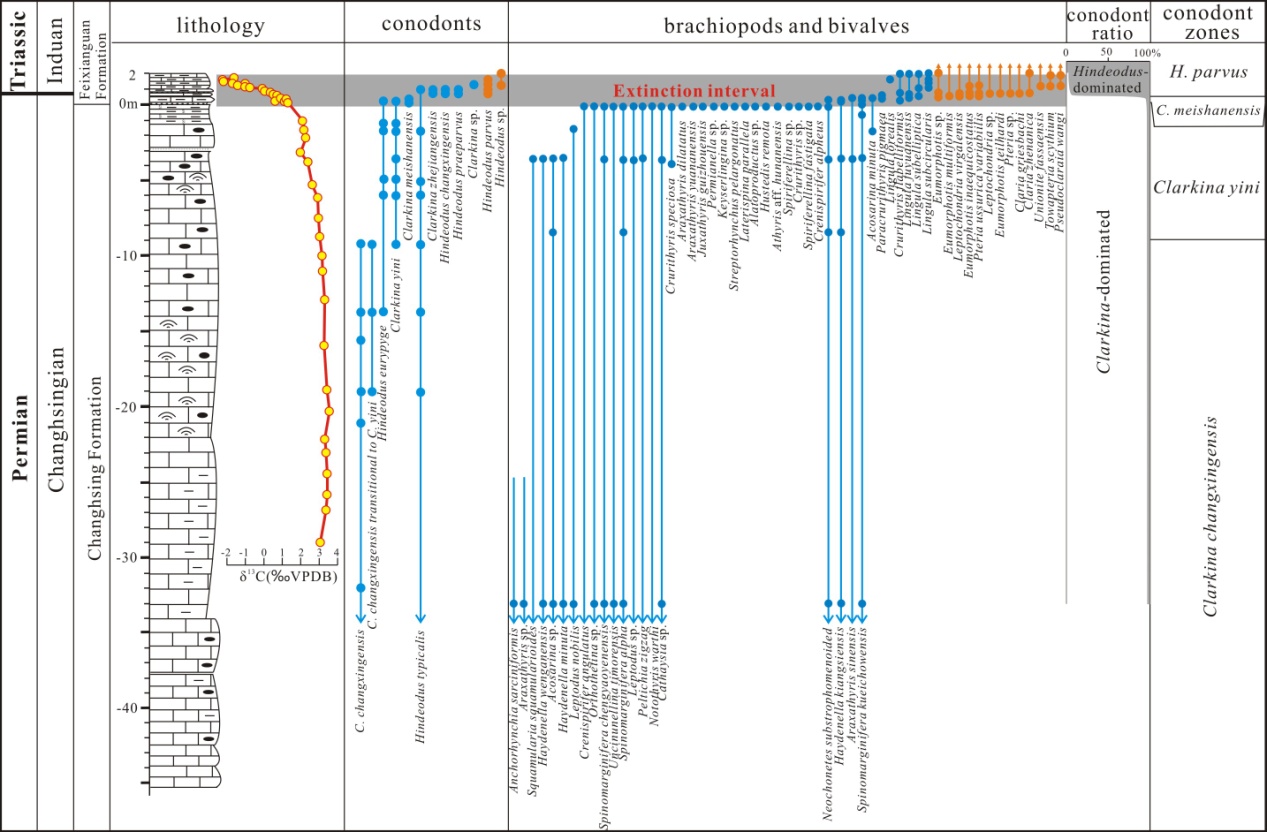A Global Stratotype Section and Point, abbreviated GSSP, is an internationally agreed upon reference point on a stratigraphic section which defines the lower boundary of a stage on the geologic time scale. It is usually defined by the First Appearance Datum (FAD) of a certain taxon within a continuous evolutionary lineage of a fossil species at the stratotype section. For instance, the Permian-Triassic boundary (PTB) GSSP was defined by the FAD of the conodont Hindeodus parvus at the Meishan D Section, and it has been regarded as a unified standard to identify the PTB in the worldwide. However, with the great improvement of high precision radiometric dating technology and high-resoltuion chemostratigraphy, its accurancy and FAD at Meishan D Section is greatly challenged.
Recently, Dr. YUAN Dong-xun and his colleagues from Nanjing Institute of Geology and Palaeontology, Chinese Academy of Sciences established a high-resolution conodont succession from a carbonate facies of the Changhsingian Stage and across the PTB at the Daijiagou section, about 35 km north to Chongqing City, Southwest China. Based on the high-resolution biostratigraphical framework at Daijiagou, the end-Permian mass extinction was rapid and it began in the base of the Clarkina meishanensis Zone. Associated with the extinction, a negative excursion of d13Ccarb started in the middle part of Clarkina yini Zone with a progressive shift of 1.6‰ to the middle part of the Clarkina meishanensis, followed by a sharp shift of 3.51‰ from the Clarkina meishanensis Zone to the Hindeodus parvus Zone. This study also suggests that the Triassic index species Hindeodus parvus co-occurred with Hindeodus changxingensis and Clarkina zhejiangensis and directly overlies the Clarkina meishanensis Zone at the Daijiagou section. All these data from the Daijiagou section and some previous studies of other sections in Sichuan, Guizhou provinces and Chongqing City suggest that the first occurrences of Hindeodus parvus are slightly earlier than the sharp negative excursion of d13Ccarb and the FAD at the Meishan GSSP section. They consider that the slight difference of the end-Permian mass extinction, chemostratigraphy and conodont biostratigraphy at Daijiagou and its adjacent areas is most likely subject to different lithofacies, fossil preservation, and the constraint on the stratigraphic resolution rather than a different tempo of the end-Permian mass extinction in a global sense. The controversial results of biostratigraphy and chemostratigraphy between the sections investigated in the paper and the Meishan GSSP section also provide some important implications that accurate chronocorrelation requires the evaluation of multiple, varied stratigraphcal signals rather than relying solely on the FAD of the Triassic index species Hindeodus parvus for recognizing the Permian–Triassic boundary (PTB).

d13Ccarb profile from upper Changhsingian to lowest Triassic at the Daijiagou section and its correlation with other sections in South China. The grey bar shows the whole negative shift of d13Ccarb in different sections, which is associated with the end-Permian mass extinction. The four sections shown here suggest a general consistent pattern in d13Ccarb profile. However, it is quite clear that the sharp negative excursions of the three sections in Sichuan and Guizhou provinces are all in the middle part of the Hindeodus parvus Zone (A-C), but the same sharp excursion is in the Clarkina meishanensis Zone at the Meishan section (D). Red line shows the correlation based on the first occurrences of Hindeodus parvus; blue line indicates the correlation based on the most negative d13Ccarb excursions.

End-Permian mass extinction pattern at the Daijiagou section in Chongqing City.
Download:
